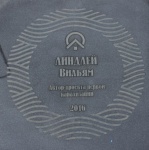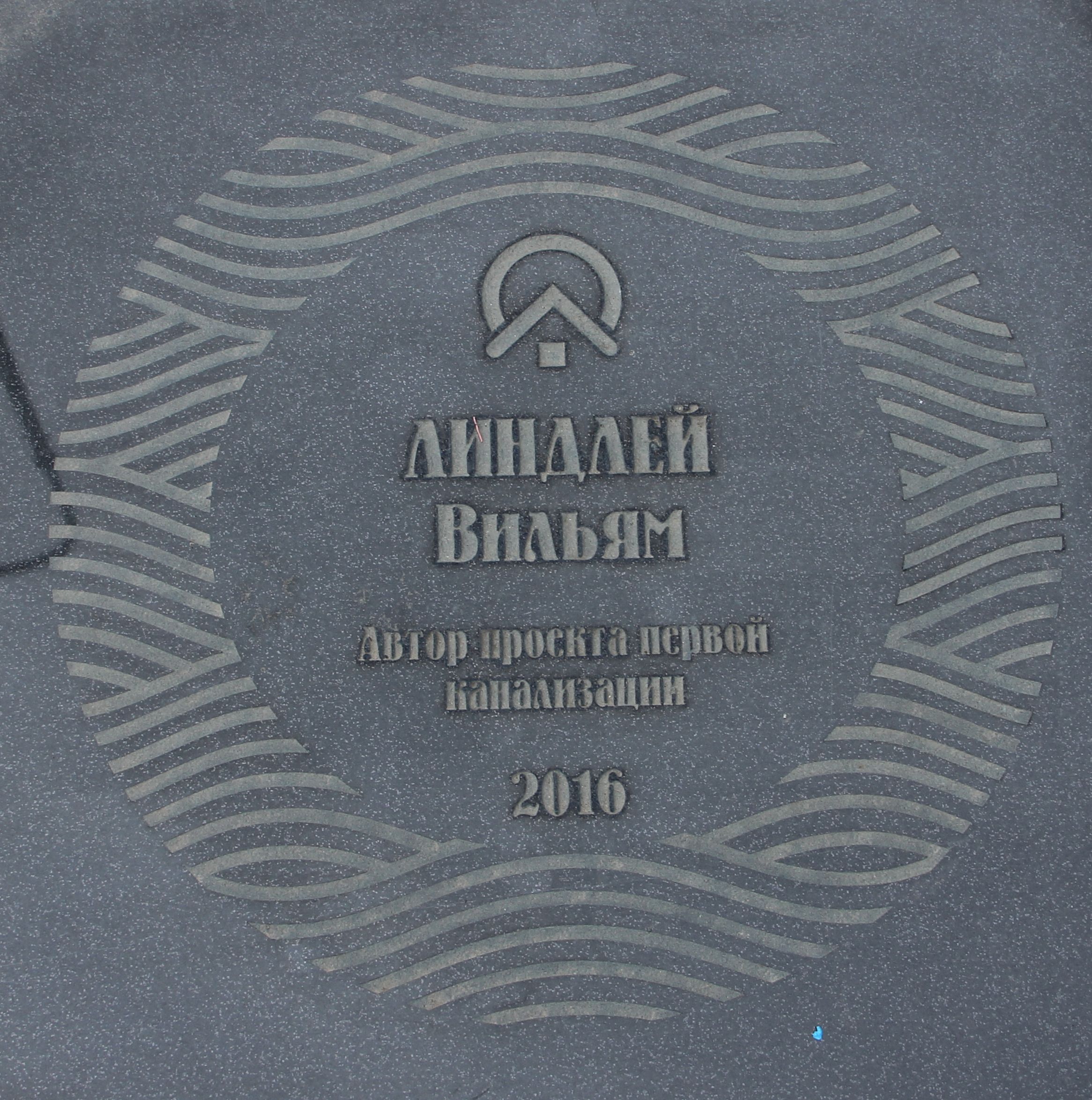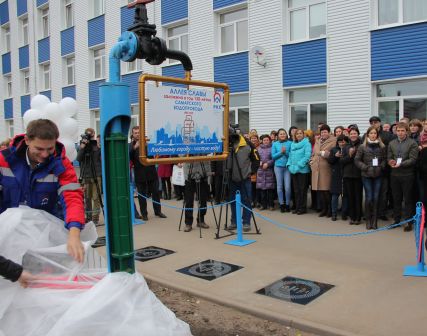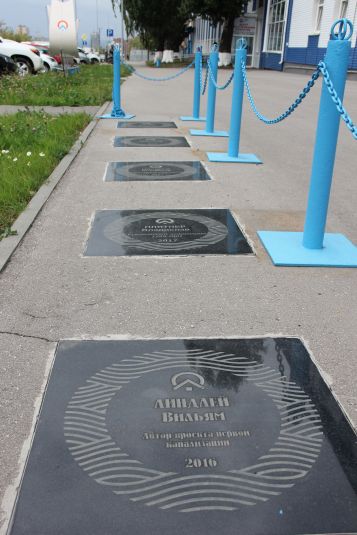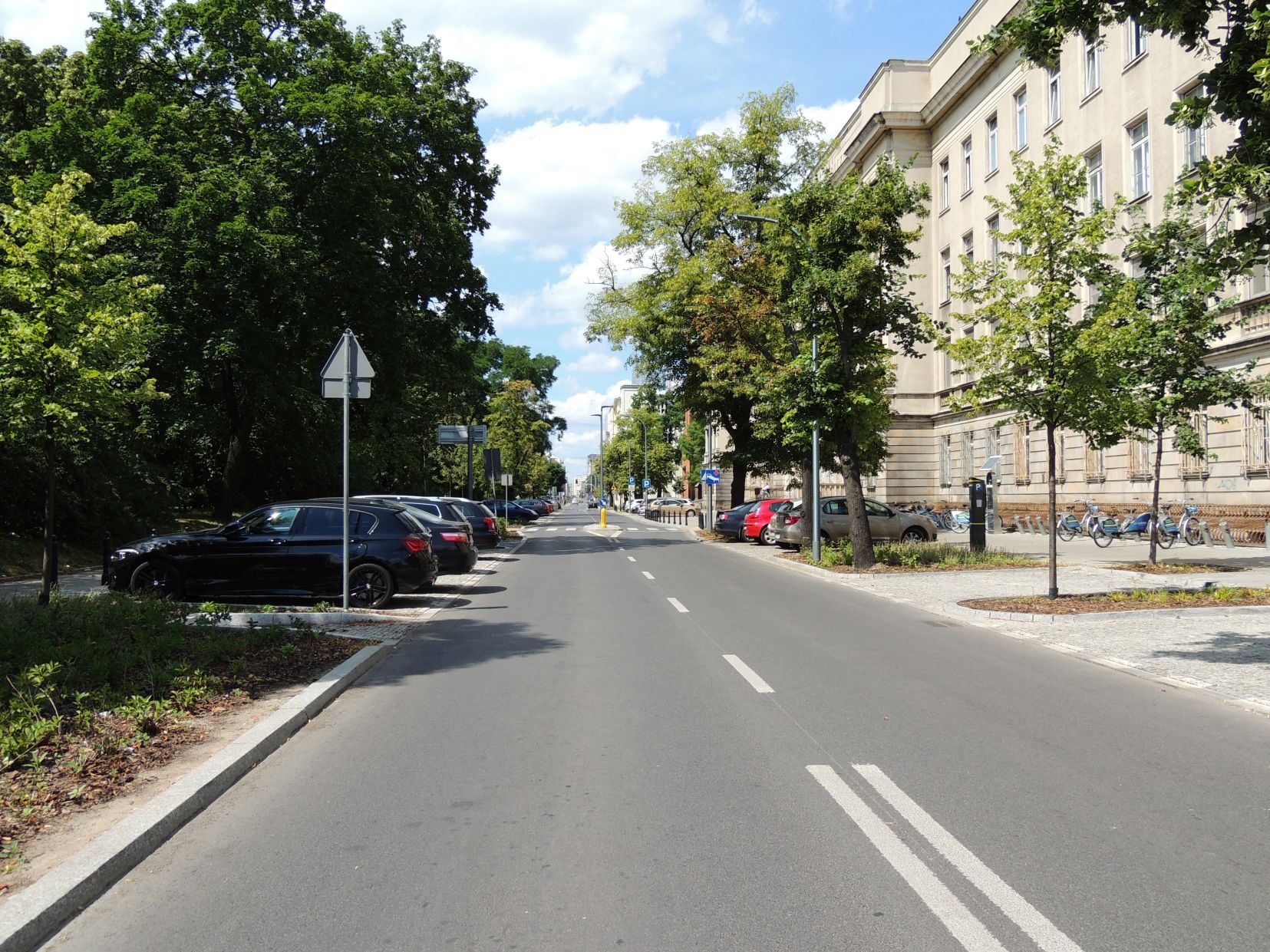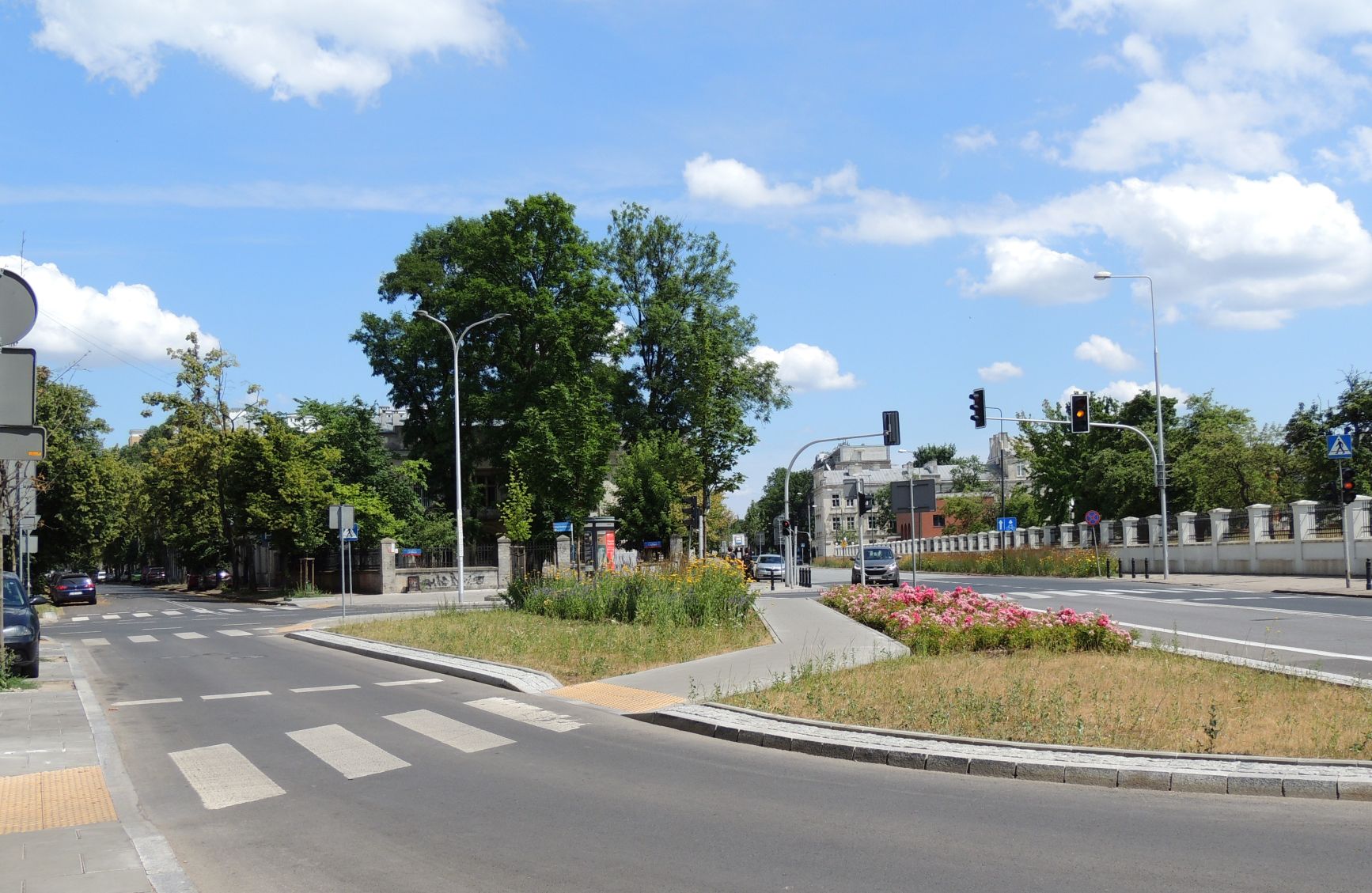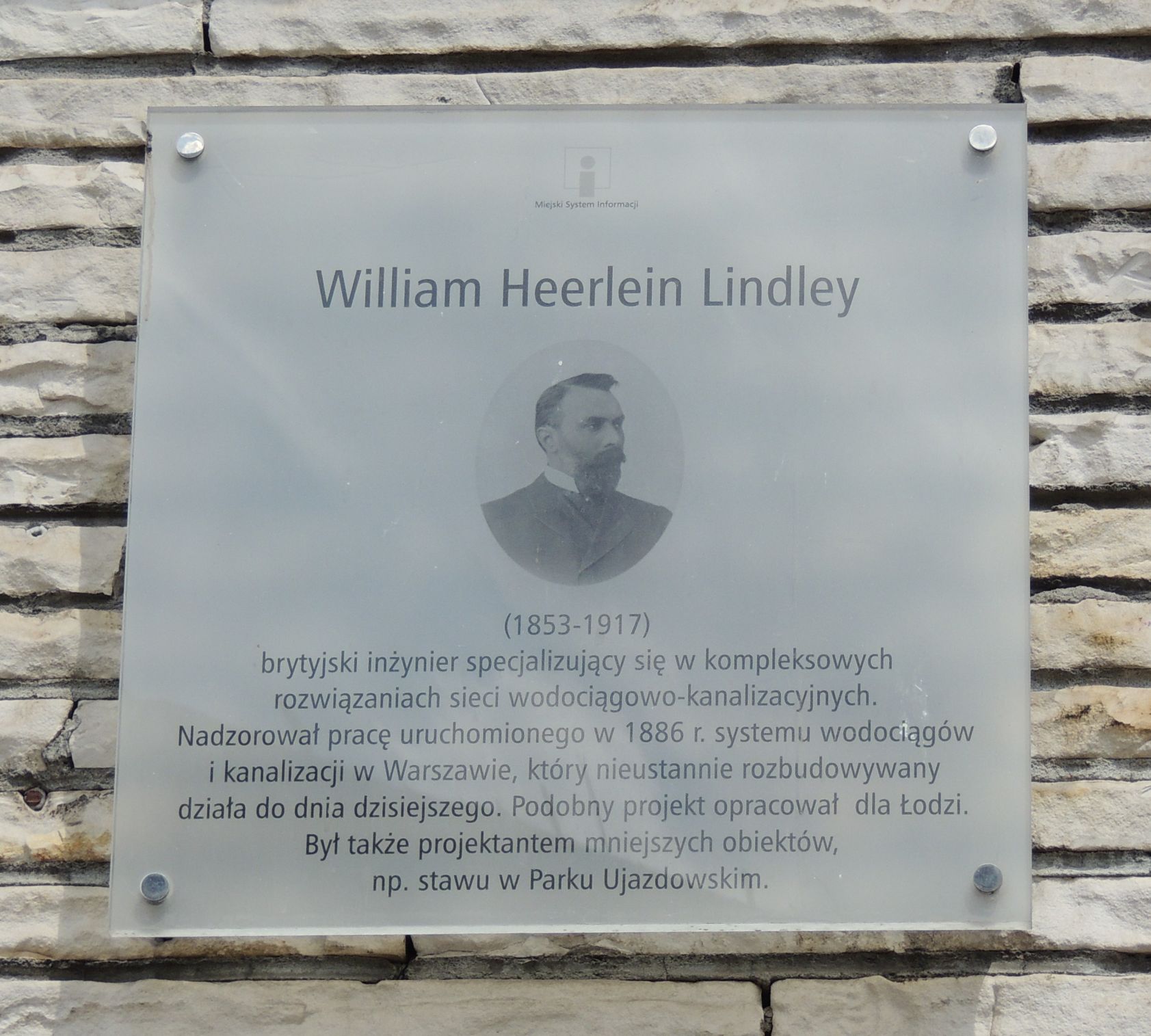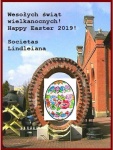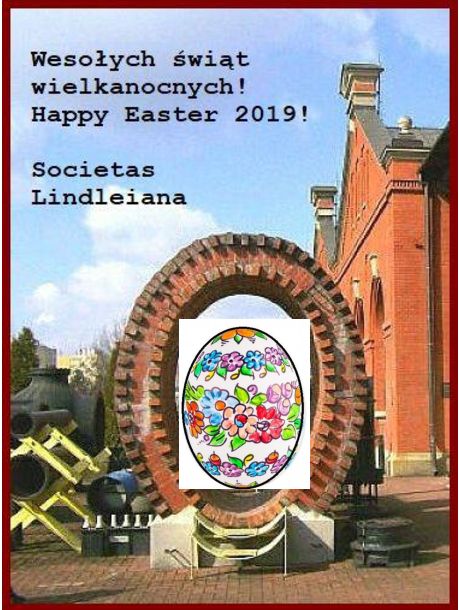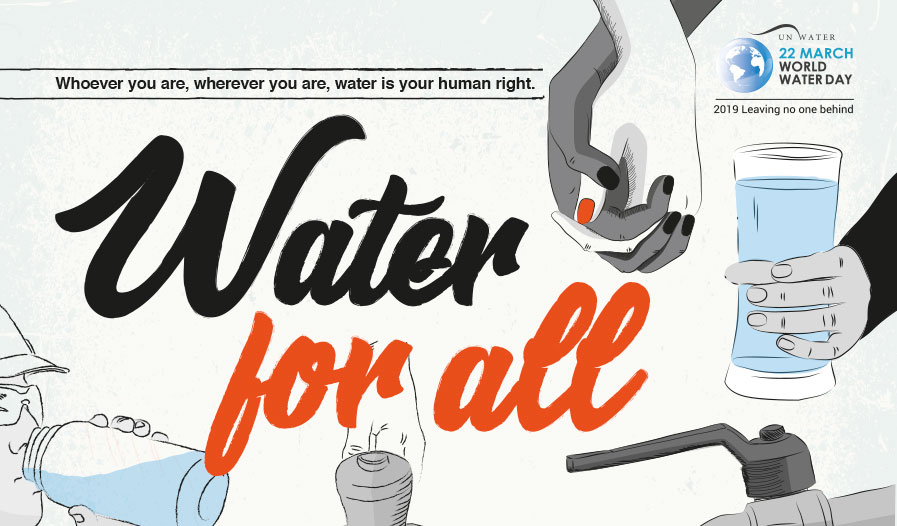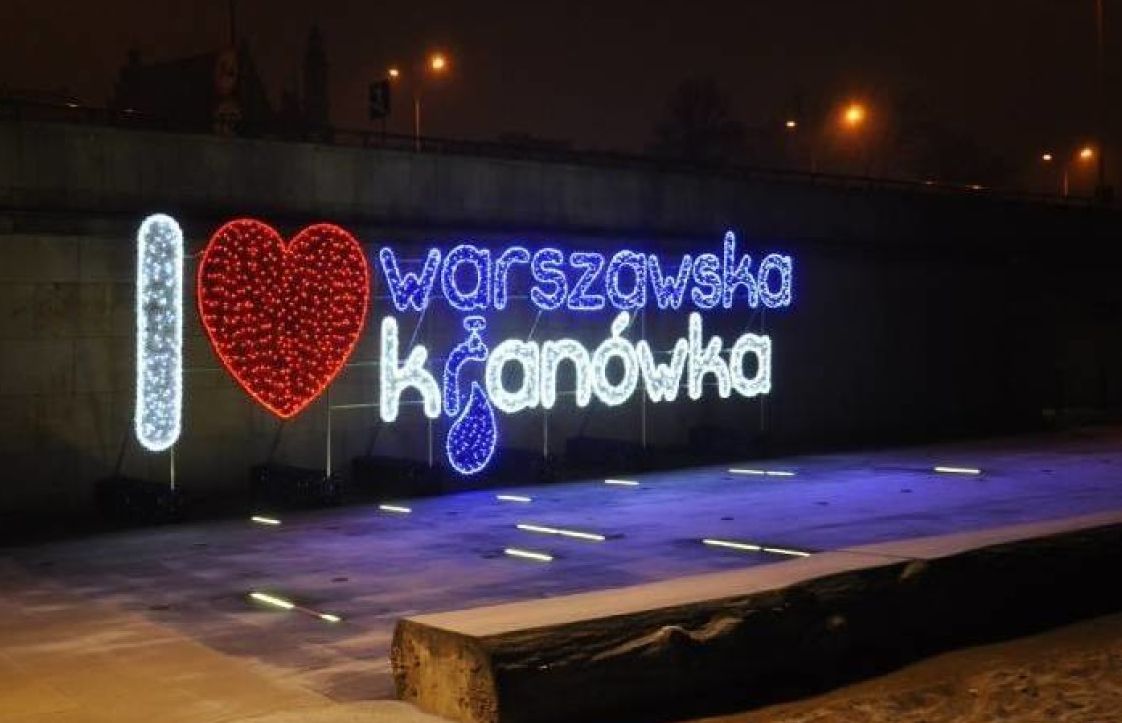Aktualności
Nowa rzeźba Williama H. Lindleya w Warszawie
Latem tego roku Warszawa wzbogaciła się o nową podobiznę Williama Heerleina Lindleya. Rzeźbę, a właściwie popiersie angielskiego inżyniera wykonał profesor Jan Pastwa z Uniwersytetu Sztuk Pięknych w Warszawie. Jest on także autorem rzeźby całej postaci W.H. Lindleya przy ławeczce mu zadedykowanej na warszawskim Podzamczu. Ławeczkę zaprojektowali dr Norbert Sarnecki we współpracy z Anną Sarnecką.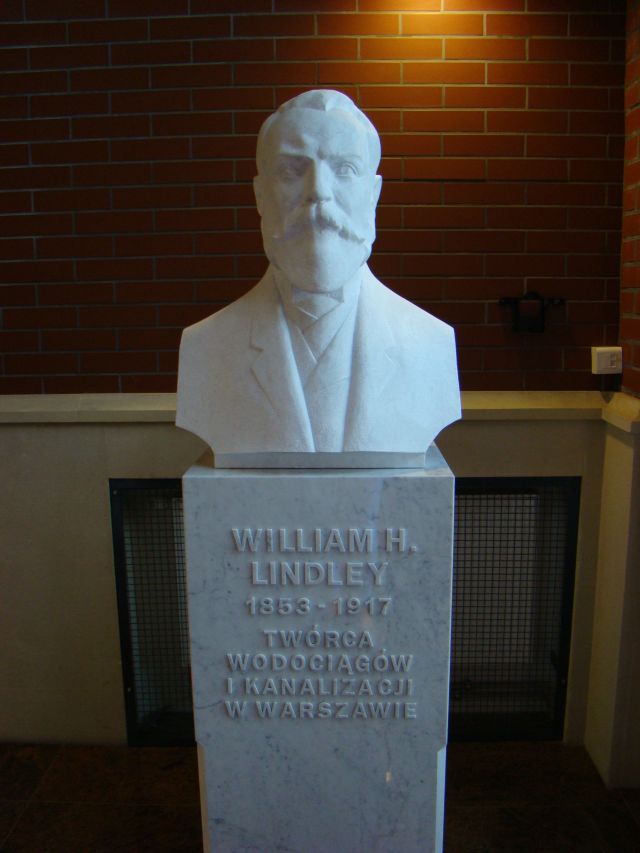
Popiersie W.H. Lindleya stoi w najnowszym obiekcie Miejskiego Przedsiębiorstwa Wodociągów i Kanalizacji - stacji ozonowania pośredniego i filtracji na węglu aktywnym. O ile płaskorzeźba przedstawiająca Williama Lindleay-ojca na frontonie budynku jest widoczna z ulicy Filtrowej, o tyle popiersie nie jest publicznie dostępne. Mogą je obejrzeć jedynie goście obiektu.
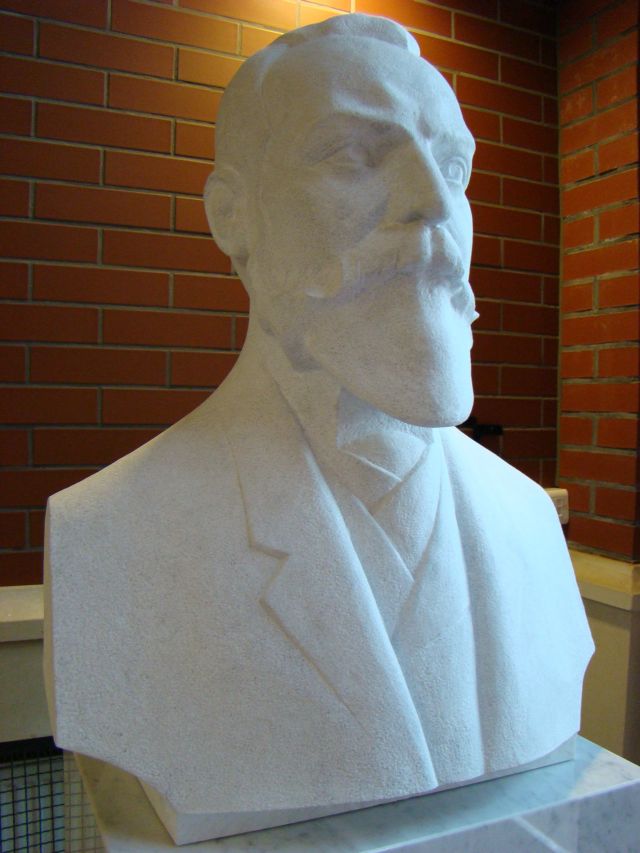
Na temat dorobku artystów zob.: http://sculpture.com.pl/files_NS/index.htm
XX Zjazd Rodziny Lindleyów w Monachium
Jubileusz – XX Zjazd Rodziny
Minęło 20 lat od naszego pierwszego spotkania w Instytucie Polskim w Darmstadt w 2003 roku, podczas którego Ryszard Żelichowski zaprezentował pierwsze wydanie swojej książki Lindleyowie. Dzieje inżynierskiego rodu. W kolejnych latach zjazdy rodzinne odbyły się w Warszawie (2007), Hamburgu (2008), Pradze (2009), Frankfurcie nad Menem (2012), Baku (2014 i 2017) oraz w Hamburgu (2015 i 2018).
Monachium 2023
Pod koniec pandemii mieszany zespół członków rodziny angielskiej i niemieckiej zaczął myśleć o kolejnym, nowym miejscu spotkania. Wybór Monachium wydawał się naturalny. Mieszkała tam jedna z naszych seniorek, Ursula Caspar (1931-2023), która w 2021 roku skończyła 90 lat, ale ze względu na pandemię nie mogliśmy jej odwiedzić. Po drugie, w Monachium mieści się słynne Muzeum Niemieckie, które William Heerlein Lindley współorganizował wraz z niemieckim inżynierem Oskarem von Millerem, zasiadał w jego zarządzie i przez wiele lat pełnił tam funkcję sekretarza-protokolanta (Schriftfüher).
Archiwum będące częścią Muzeum przechowuje od
1920 roku materiały podarowane przez żonę Sir Williama Heerleina, Lady Fanny
Henriettę Lindley (1859-1931), w ramach Lindley Stiftung (Fundacja Lindleya). I na dodatek, 170 lat temu (1853 r.) urodził
się William H. Lindley. Okrągła okazja
do świętowania.Niestety los zdecydował, że w kwietniu tego roku odeszła od nas
Urszula Caspar, a przed nią obaj jej bracia Aleksander i Dietrich.
Po konsultacjach z Archiwum i rodziną
zgodziliśmy się, że będziemy kontynuować nasz zjazd.
Na fotografii, od lewej: Margrit i Lorenz Neubauer, Karin Deubner i Tom Lindley. Spotkanie w Hirschgarten przy tradycyjnych potrawach bawarskich
Zdaniem dyrektorów Archiwum, najlepszym czasem na wizytę w Monachium to okres od 12 do 14 września 2003 r. Za organizację naszego trzydniowego zjazdu odpowiadał Eugen Deubner z Wiesbaden, który pozostaje w stałym kontakcie z niemiecką częścią rodziny. Do projektu chętnie włączyła się część angielska pod przewodnictwem Billa Lindleya.
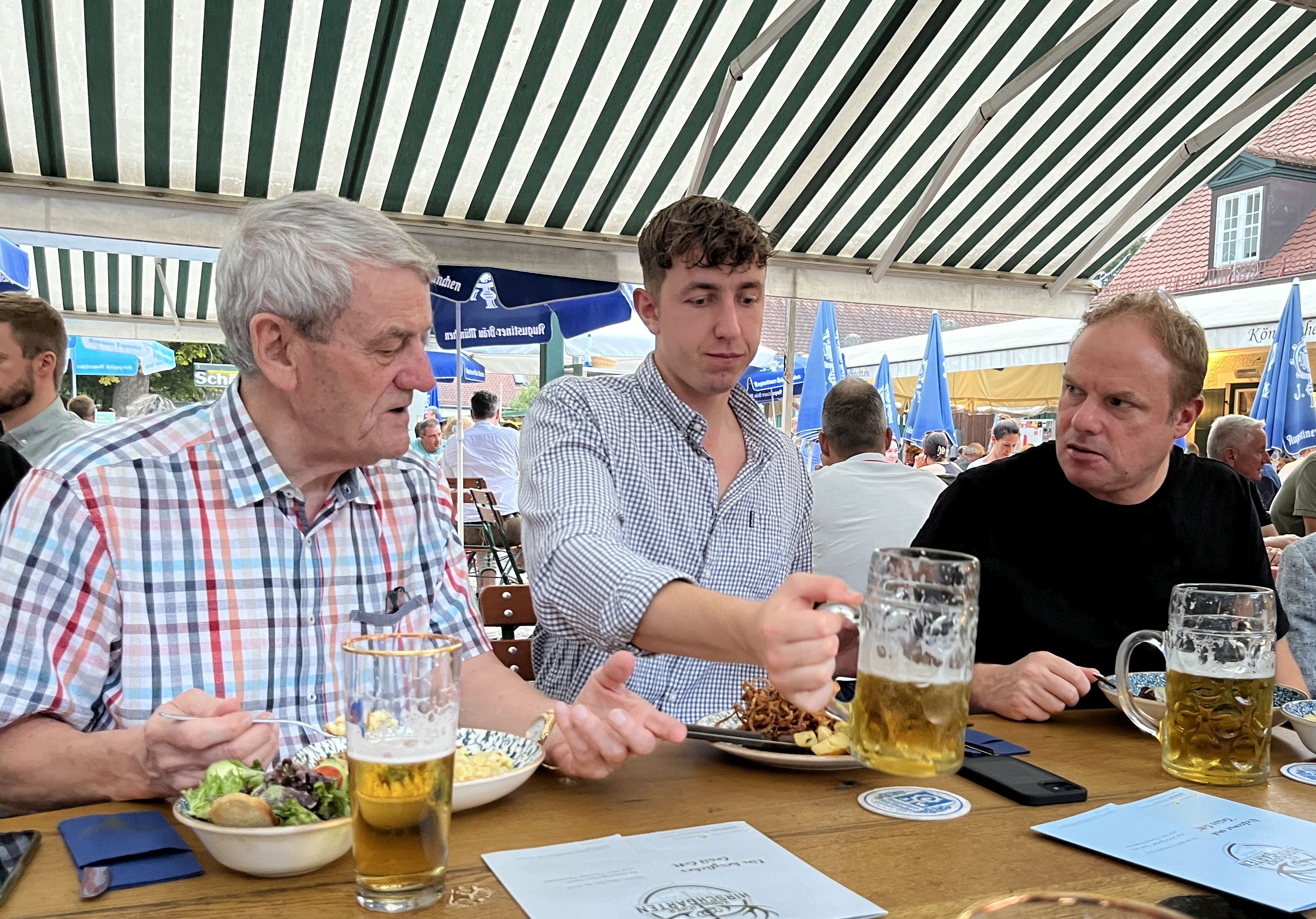
Eugen Deubner, Ben Lindley i Alex Egerton
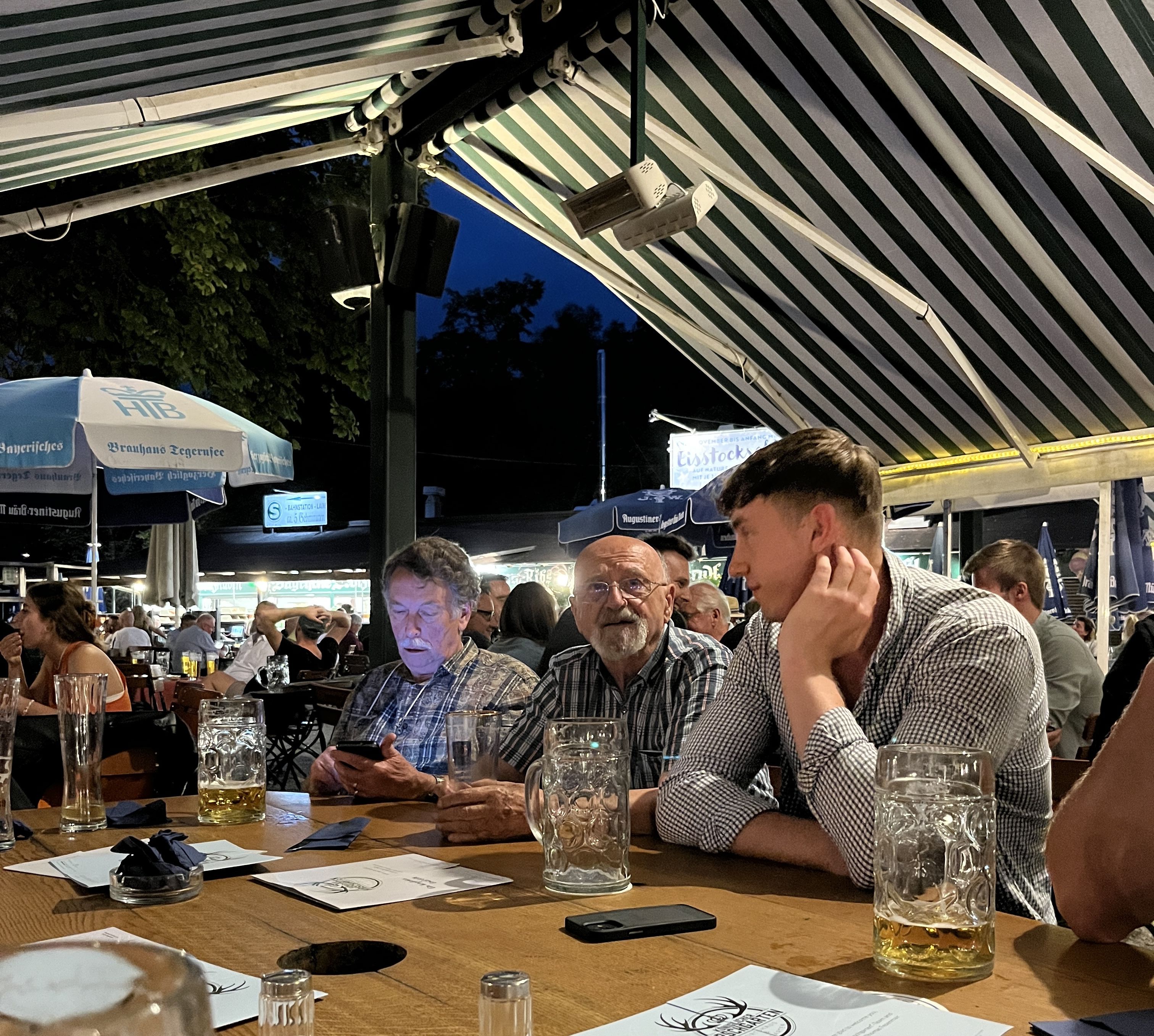
Bill Lindley, Ryszard Żelichowski i Ben Lindley
Cel główny został osiągnięty. Po pięciu latach spotkaliśmy się, cieszyliśmy się swoim towarzystwem i świetnie się razem bawiliśmy. Najważniejszymi punktami rodzinnego spotkania były: prezentacja dr. Röschnera, zastępcy dyrektora Archiwum, przedstawiająca niektóre skarby Archiwum, w tym przykłady kolekcji Lindleiana oraz dowcipna i pouczająca wycieczka po Muzeum Niemieckim pod przewodnictwem Alexandra Lucasa.
Z niecierpliwością czekamy na kolejny zjazd rodzinny, być może w Anglii.









